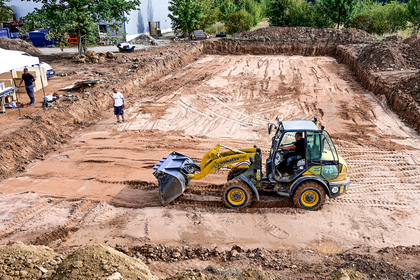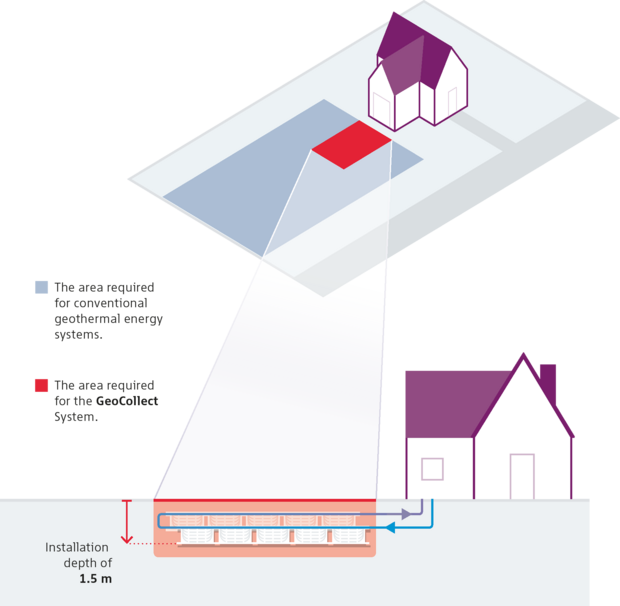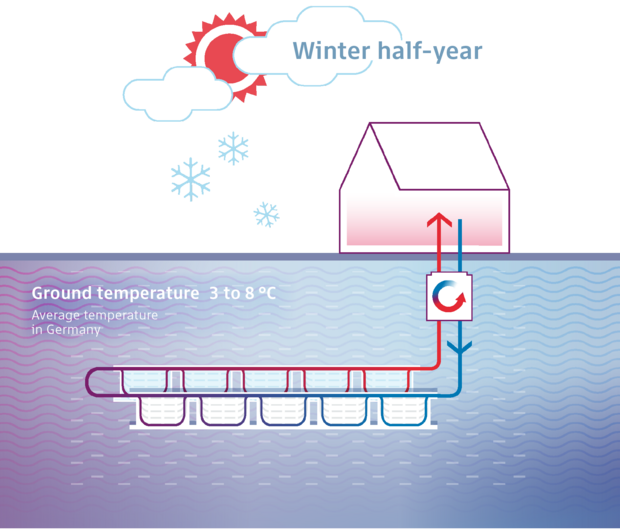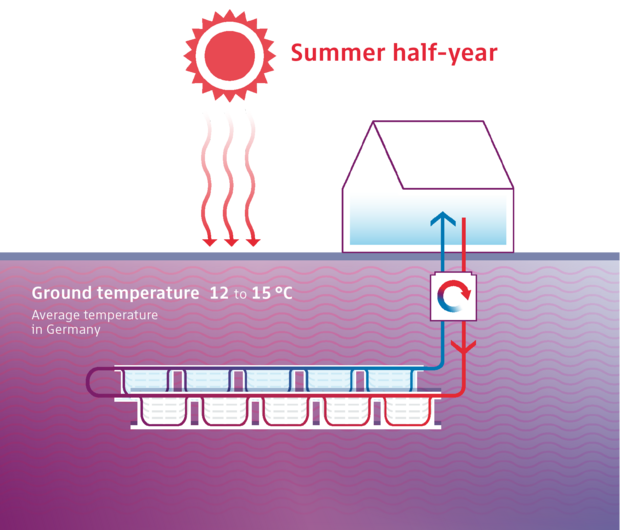Small area, maximum energy
The GeoCollect absorber strands stand upright at a depth of 1.5 m. Each of them consists of ten GeoCollect modules welded together. With their large area, they cover a high volume of soil from which they extract the source energy for a geothermal heat pump.
Our geothermal collectors only take up one sixth of the area required for conventional systems.
At temperate latitudes, the soil is regenerated in the cycle of the seasons. In summer, the sun supplies approx. 1,000 kWh per square metre of soil. During the heating period, the GeoCollect system is able to harvest around 20 to 25 percent of this energy, i.e. between 200 and 250 kWh per square metre of unsealed land.
When winter comes
At the beginning of the heating period, in mid- to late September, the soil has source temperatures of between 12 and 15° C. During the heating period, and well into December, the temperatures amount to about 0° C. The moisture in the soil starts to freeze at this temperature. When water turns to ice, the process releases the amount of energy required to heat the same quantity of water by nearly 80 degrees.
By the end of winter, between late February and mid-March, ice build-up around the GeoCollect module increases. The brine temperature drops to -3 or -4° C, and to -5 or -6° C after a hard winter. The ice build-up around the GeoCollect module increases the thermal conductivity of the soil, and more heat is conducted upwards from the soil layers. This process ends in spring. Sunshine is stronger in March, when it supplies the soil with regeneration energy again.
The laying distance of at least 70 cm between the GeoCollect strands means that, after the first spring weather between late April and mid-May, the amount of energy supplied to the soil is so high that it provides the heat pump with source temperatures of typically around 0° C.
When summer comes
The soil regenerates completely during summer. By the time the heating period begins, we have a fully charged solar energy source at our disposal. For a GeoCollect system configured according to the specifications, the average source temperature over the total operating hours of the heat pump is 0°C. Using a surface heating system helps to achieve an annual COP of between 4.5 and 5. 1 kW of electricity is required to produce 4.5 to 5 kWh of heat. If this current is generated by a photovoltaic system, we come close to a self-sufficient energy supply.
Owners of existing properties without surface heating combine our system with a solar thermal power source or a photovoltaic system including thermal utilisation of the waste heat. Throughout the year, these yields increase the source temperature by up to 5 degrees. As a result, a geothermal heat pump works absolutely efficiently even at heating flow temperatures of 45 to 50 degrees.




